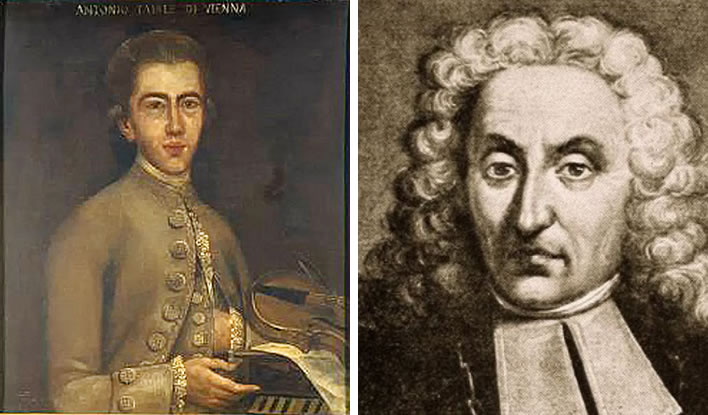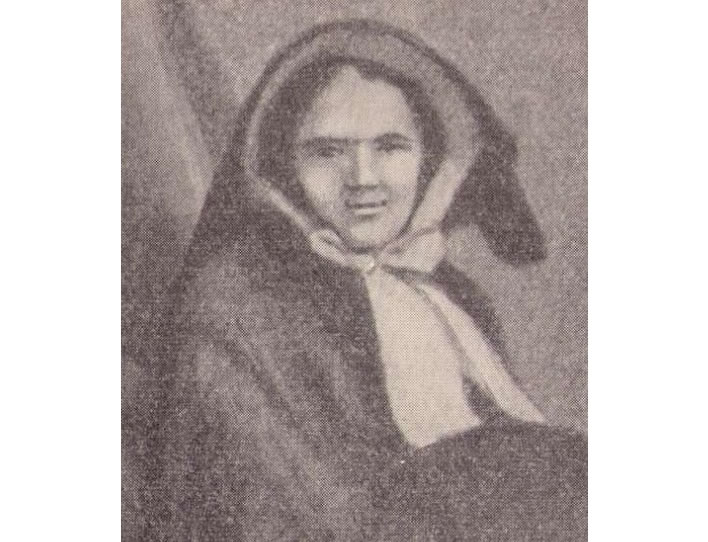Anton Teyber and his daughter Eleanor
Posted on UTC 2025-02-01 08:00
In order to understand another important connection between Heloise and Gheorghe Asachi we have to know a bit more about Asachi's family. To do this we have to return to the imperial capital, Vienna, and the now largely forgotten figure of Anton Teyber (1756-1822).
Teyber was a well regarded musician, composer and teacher at the Austrian imperial court. His father had been a violinist in the Hofkapelle in Vienna.
For nearly 25 years, the young Teyber had studied and toured widely in Europe. The Teyber and the Mozart families were friends. Leopold II brought him to Vienna to be the deputy of Salieri in the orchestra of the Court Opera. In 1793 Franz II engaged him as a composer in the Court chamber orchestra. He was without doubt a well-connected musician.

Anton Teyber (1756-1822)
The Hapsburgs always attempted to breed cultivated all-rounders to run their dynasty, so all the royal children of that period had Teyber as their music teacher. His employment at the court was the final phase of Teyber's career, which lasted nearly thirty years and which was concluded by his death in 1822.
It is an indication of the respect in which Teyber was held in that after his death his former pupil Archduke Rudolf (a Beethoven sponsor) bought Teyber's entire musical estate from his widow.
Despite his musical eminence during his life, he is nowadays known mainly to specialists, probably because, working as he did for the imperial court, only a few of his compositions ever made it into print. By 1869, when Ritter von Köchel wrote his history of the imperial musicians, Die kaiserliche Hof-Musikcapelle in Wien. Von 1543–1867, Teyber was consigned to insignificance: Von bedeutenden Compositionen ist nichts von ihm bekannt, 'Nothing is known of any significant compositions of his' – possibly because Archduke Rudolf had stuck them in a drawer somewhere.
I don't know the name of his wife, but Anton had two daughters, Eleanora (1789-1877) and Elisabeth (c. 1792-1831). Of Elisabeth we know only that she performed as a soprano and taught singing. She died in 1831 and thus plays no part in our story. Eleanora was talented and received a solid musical training.
Eleanora Teyber
Unfortunately for the reader, our story now takes on a Balkan level of complexity. We know that Eleanora married a Bulgarian merchant by the name of Kiriako [a.k.a. Chiriac] Melirato. At some point they lived in Vidin [house no. 614], in present-day Bulgaria. The date of this marriage is uncertain.
How the musically talented daughter of a court composer in Vienna ended up married to a Bulgarian merchant is a mystery, but who can fathom the secrets of the human heart?
Between 1817 and 1822 Eleanora was employed as a governess to the children of the Moldavian eminence, Mihail Sturdza (1794-1884) in Jassy. She was presumably living there with Melirato – or not, as the case may be.
Eleanora produced three children: Dumitru, Glicheria [Glyceria] (1821-1900) and Alexandru. The polymath and polyglot Gheorghe Asachi (1788-1869, almost the same age as Eleanora) was also present at Sturdza's court around this time, before being sent to Vienna as an emissary in 1822, shortly after Sturdza became ruler of Moldavia (21 June 1822). Cruel tongues suggest that the three children were fathered by Asachi, not by Kiriako. Who knows? Who cares?
When Gheorghe was sent to Vienna, at some point, Eleanora joined him there. The generally accepted tale is that at the end of his assignment he returned to Jassy with Eleanora, she divorced from Melirato and married Gheorghe in 1826 or 1827. The divorce was not amicable: on 29th April 1830, Kiriako Melirato submitted a complaint requesting the dissolution of the marriage between Gheorghe and Eleanora on the grounds that he and Eleanora were still not formally divorced. His complaint was rejected. Eleanora took a Romanian first name, Elena, and converted to the Orthodox church (which was required to be able to marry). Even this date is difficult to establish since the original marriage certificate has not survived.

Elena Asachi, ND. The only image we seem to have of Elena.
Gheorghe adopted the three children from Eleanora's marriage to Kiriako (that is, they legally became his children, not his stepchildren), but as already mentioned, we cannot be sure that these children weren't his in the first place. In the only portrait we have of daughter Glicheria/Ermiona, a daguerreotype taken when she was in her late twenties, those with good imaginations may be able to see the Asachi in her face.
A Viennese document suggests that Eleanora and Kiriako separated in September 1823 (after Gheorghe went to Vienna). A further layer of uncertainty arises from an application made by Elena Asachi in Jassy in 1875, six years after Gheorghe Asachi's death. She and five witnesses swore under oath that the marriage had taken place in Vienna on 10th January 1816.
There are a number of reasons for doubting the veracity of this date, which seems to have been concocted to assert a stake for the widow and the children in Asachi's considerable legacy. Having the marriage take place in 1816 meant that the three children Dumitru, Glicheria and Alexandru were born within wedlock during the purported marriage with Gheorghe Asachi. In which case, why did Gheorghe need to adopt his own children ten years later?
Eleanora/Elena Asachi in Jassy
In joining the Orthodox Church she discarded her Western name Eleanora and adopted the Romanian version Elena – a natural step for the wife of the great propagandist of all things Romanian, Gheorghe Asachi. Complementing Gheorghe's dynamism, Elena's life in Jassy was a cultural whirlwind. We can appreciate what they saw in each other.
Through his connections, almost immediately after their marriage in 1827, she and Gheorghe brought about the establishment of the first musical institute in Moldavia, the Philharmonic Drama Conservatory in Jassy, where she became a professor of composition and piano, a post she would hold until 1863.
Elena would have three more children with Gheorghe: Dimitru, who, as already noted, became a mathematician and topographer, and Alexandru, who reached the rank of colonel in the army but also became known as a graphic artist and lithographer. The third child, Eufrosina, died at 16 years old.
0 Comments UTC Loaded:
Input rules for comments: No HTML, no images. Comments can be nested to a depth of eight. Surround a long quotation with curly braces: {blockquote}. Well-formed URLs will be rendered as links automatically. Do not click on links unless you are confident that they are safe. You have been warned!